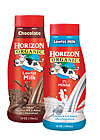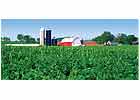
At the Organic Trade Association’s All Things Organic trade show last month, Horizon Organic introduced several new products, including organic milk with DHA, single serve bottles and ice cream.
As the top marketer of organic milk in the U.S., Horizon’s entrée into the ice cream aisle makes sense. It also helps that Horizon is a Dean Foods company, and therefore has a familial relationship with a good number of outstanding ice cream makers.
Horizon’s booth at All Things Organic was right next door to Stonyfield Farm’s and on the other side of the organic yogurt leader was Organic Valley Family of Farms, the top organic farm cooperative in the country-itself no slouch in the organic milk business.
For three days in May the real muscle of the organic dairy industry stood shoulder to shoulder in Chicago. All three had exciting things to talk about, and that should come as no surprise.
Once ignored as an insignificant niche, organic dairy now accounts for more than $2.5 billion in annual sales, according to trade association data. It’s expected to eclipse $3 billion by 2010.
Food industry insiders once shrugged at the term “natural” claiming it was ill-defined, but that was before the standards employed by retailers like Whole Foods clearly distinguish between yogurt and ice cream products that are truly made with all natural ingredients and those that are just giving lip service. Then there is the no-rBST issue.
Publix Super Markets is the latest retailer to announce that it is phasing out milk from cows treated with the synthetic hormone. And while Monsanto and some producer organizations are protesting with complaints to USDA about so-called marketing claims, most dairy processors are claiming their right to choose milk made without a chemical boost.
The emergence of no-rBST products is unsettling in itself for those involved in organic dairy, and if you throw it together with the ongoing debate (and wait) regarding pasture access and changes to the Organic Standards, and mix it up with the uncertainty caused by the artificial big flush of organic raw milk, it’s hard for anyone to say where the whole thing is going.
“It’s difficult to predict,” says George Siemon, president of Organic Valley. “You have to step back and say, ‘OK, where is the top end?’ We know that the organic consumer has determined that that there is quality in what we produce, but we have to constantly remind ourselves that there are new organic consumers all the time, and we have to ask what brings them to organic.”
And while organic and natural are distinct descriptors, the distinctions may not be made by all consumers, and they may be just part of a group of distinctions the natural and organic consumer looks for. There are fair trade products that offer another added value, and there are high-health functional foods that compete with the wholesomeness of organic. And in dairy, the way milk is pasteurized, (or even if it’s pasteurized) can be part of the internal debate an educated consumer goes through when making food choices.
A recentTIMEmagazine cover story tackled the wider food-as-politics debate by illustrating how these choices are made. The author took a very personal approach, describing an experience he had in a Manhattan grocery while trying to choose between an organic apple from California and a more locally-grown conventional counterpart.
The story includes a thorough discussion, but a cursory reading might lead one to conclude that locally-grown might be a consideration that could replace organic.
“There’s room for everyone,” says Nancy Hirshberg, v.p. of natural resources at Stonyfield Farm. “We are still, with organics, like 4% of the U.S. dairy business-it’s still a tiny piece, so there plenty of room for everyone.”
The author of the magazine article noted that for him, locally-grown became a greater priority than organic. But something else about the author’s decision making may support Hirshberg’s proposition: He bought both apples.
A year ago, the story about organic was that it was becoming mainstream, with major retailers like Safeway and Wal-Mart fully buying in along with major food manufacturers. Undoubtedly that trend will continue, despite the multi-front volatility organic is currently undergoing. Still, the question on the minds of those with a stake in the fledgling organic and natural foods industry has to do with a different use of the word sustainability: Can organic sustain its growth, its optimism and its integrity?

More milk
Late in 2005, growing demand and numerous other circumstances on the supply side led to a seriously tight supply of raw organic milk. The shelves in some dairy cases actually went empty. New Hampshire-based Stonyfield looked at the possibility of importing some organic powder from New Zealand, but ultimately, the company converted some of its organic product lines back to conventional milk. It put messages on its packages asking consumers to be patient, and earlier this year the patience began to pay off, as Stonyfield began to convert back to organic.“We have planned for some time to convert our quarts back to organic.” Hirshberg says. “We expect to use 40% more organic milk this year than we did in 2006. I’m very proud of how well we coordinated this. That was great planning on the part of Stonyfield and CROPP.”
Stonyfield’s primary raw milk supplier is Cooperative Regions of Organic Producer Pools (CROPP), the parent cooperative of Organic Valley.
The rebound of the organic milk supply has little to do with the fluctuations of supply and demand or the usual variations caused by seasonality, and weather. Instead, it has everything to do with Arthur Harvey, a farmer who in 2005 managed to cause a change in the regulations stipulating how a dairy farmer can convert to organic status.
Because of the timing of that ruling and a subsequent grandfather clause, numerous farmers who had been contemplating converting to organic did so just about 18 months ago and are now fully certified. Their milk has been coming to market since April and the peak will pass this month, coinciding with the natural spring flush that affects all dairy herds.
Compared to what was on the market in 2006, the swell could amount to a 40%-50% increase. While Stonyfield’s re-conversions will eat up a percentage of that, there will still be plenty of additional milk available. At the same time, the conventional milk pay price is currently fairly high.
So what are organic marketers doing? In some cases it’s the same thing that the conventional milk market does-promoting the heck out of the product with sale prices, and two-for-ones. Another option is to put the milk into aged organic cheese, Siemon says. That works particularly well for Organic Valley which successfully markets a full line of organic dairy products including cheese. The Wisconsin-based company also sells a considerable amount to ingredient cheese to organic food manufacturers for pizza, macaroni and cheese and other organic prepared foods.
Siemon, Hirshberg and others say that long-term contracts and other factors will help cushion the impact that all that extra milk might have on the farmer payout. But Hirshberg notes that while farmers might continue to receive a relatively high and relatively stable price, there may be less transition subsidies to go around for a while.
Out to pasture
Cows and pasture always go together. Just ask any 5-year-old. And organic cows, why they have to be in a pasture, right?If only it were that simple.
Some might say one of the biggest threats to the organic milk business is the internal debate over what actually constitutes organic milk. Yes, the USDA Organic Standards, adopted in 2001 do stipulate that organic milk must come from cows that have access to and derive nutrition from grass pastures rather than being kept on a grain-feed diet.
But the standards do not provide adequate definitions of those terms, and while a new ruling and modifications are expected this year, it looks like they will come much later this year, at best.
Meanwhile the debate has pitted consumer groups like the Cornucopia Institute of Wisconsin and the Organic Consumers Association, against Aurora Dairy and Horizon Organic. Both Horizon and Colorado-based Aurora (the top processor of private label organic milk) source at least some of their milk from large, company-owned or independent farms that offer little in the way of pasture access for herds, according to the groups.
Dating back several years, complaints have been filed with the USDA, and about a year ago, both companies were boycotted by Minnesota-based OCA, and by some regional natural food retail chains in Colorado and Oregon, who claim that the products from both companies should not be labeled organic.
While the cooperation between Stonyfield and CROPP might offer lessons to the larger dairy industry, this infighting involving the country’s largest organic milk brand has also offered ammunition for organic detractors like the conservative Hudson Institute and its “Milk is Milk” campaign.
While putting cows in a pasture may seem academic or showy, managed, rotational grazing is really a crucial piece of what organic dairying is about in that it provides rich benefits for both the health of the soil and the nutrition of the cow. In fact, numerous studies indicate that milk from cows that are raised strictly in this manner is indeed distinct in its composition, with a fat content that is higher in healthy fats than milk from cows fed primarily on grain.
Horizon, at least, has vocally defended its practices saying that while it sources some of its milk from large farms, the greater portion of its milk source comes from small family farms, many of which have been aided in their transition process by Horizon.
In March, Horizon (which is actually a unit of Dean’s White Wave Company) published its own “Standards of Care,” a comprehensive set of guidelines that will govern how the company runs its company-owned farms. Horizon says they comply with USDA requirements and “aspire to the next level of organic stewardship.”
“Today, a growing number of consumers are interested not only in organic products but also in how they are produced,” said Kelly Shea, v.p. of industry relations and organic stewardship for Horizon Organic. “Our ‘Standards of Care’ reflect how we manage our company-owned farms. Our goal is to be part of a larger organic community that fosters the highest possible standards for animal welfare, environmental stewardship, and agricultural sustainability.”
According to Horizon those standards require that cows graze on organic grass during the growing season. These efforts have eased the boycotts a bit, with one Colorado chain welcoming Horizon and its sister soy milk products back, but some, including OCA are still not satisfied.
Meanwhile, USDA is expected to rule eventually on what the stipulated standards for pasture access will be, Hirshberg says it’s still unclear whether that will end the discord.
“It depends on what they come out with,” she says. “What most in the organic industry are asking for is 30% dry matter (cut hay can be used in winter) and 120 days on pasture.”
During the 20 years since the U.S. organic food market’s infancy, several shifts have taken place in food and in agriculture. Rotational grazing is a movement that has developed in beef and dairy farming, sometimes as a parallel and sometimes overlapping the organic movement. In this type of farming, cows are moved from pasture to pasture, and to and from individual sections or paddocks for grazing. The cows feed themselves, and spread their own manure, and the farmers focus on milking and taking care of the pasture.
At least one organic operation and one non-organic are marketing grass-fed or pasture-fed dairy products, noting the difference in fat composition. For more on this, search for grass-fed milk in theDairy Foodsarchives at www.dairyfoods.com.
From Big G to Big Box
In 1999, before the organic standards were complete, General Mills raised a few eyebrows when it bought Cascadian Farms a tiny, but fast-growing maker of organic cereal. The makers of the Big G line of cereals (which are now made with whole grains) was among the first billion-dollar food companies to literally buy into the burgeoning organic arena.Consumers can now buy organic potato snacks made by Frito-Lay, and they can probably get them at Wal-Mart. It’s been just a little over a year since the retailer that co-opted the smiley face announced that it would bring organics to the masses, and then roll back the prices just like it has on everything from spaghetti sauce to plasma TVs.
The jury is still out on whether Wal-Mart can really go green and stick to its pledge to offer organic at a 10% price differential. But if nothing else is sure, Wal-Mart’s proclaimed intentions have gotten the interest of major food manufacturers. Sure, there are other factors that have led to the Organic Oreo (yes, it really exists!), but Wal-Mart might be the main driver, and dairy is certainly not immune.
In fact, organic milk is a big part of what Wal-Mart has in mind. Having carried Horizon Organic milk for several years, Wal-Mart was already the leading retailer of organic milk before rolling out its own private Great Value brand of organic, supplied by-you guessed it-Aurora Dairy.
When the brand was introduced, representatives from Aurora (which is vertically integrated. owning both large farms and a highly efficient processing plant in Colorado) said they were already making changes that would allow its cows more pasture access. This includes the expansion of farm operations in Texas.
But critics say Wal-Mart should go the route of Horizon, Organic Valley, and Stonyfield by providing financial assistance to help small farmers to transition to organic.
The world’s largest retailer continues to carry Horizon Organic along with its own line, so there is reason to believe that there will be plenty of new organic shoppers providing some demand to offset some of the extra organic milk supply that has just flooded the market.
While that unfolds, it will be interesting to see how no-rBST milk is positioned going forward. In the past year some processors that have chosen to go natural have added the word natural to their labels, sometimes as part of the brand name.
Outside of milk, yogurt has been the biggest dairy sub-category for organic with most of that business going to Stonyfield and Horizon. Stonyfield has also been quick to join in the excitement over natural Greek-style yogurt, a product that because of its process needs no stabilizers. Stonyfield has just introduced its own line of Greek-style organic yogurt. YoCrunch, which is now part of Healthy Foods Holdings, just rolled out its Naturals line.
There is some movement in ice cream, with Breyers and Horizon involved. As the organic milk market grows there is more organic cream available for ice cream makers. Ben & Jerry’s has some organic Fair Trade ice cream, a small company in Colorado, Boulder Ice Cream, recently went organic, and Stonyfield does some business in ice cream and frozen yogurt. Look for more offerings from mainstream ice cream companies in the near future.
Some analysts contend that dairy could suffer if consumers are confronted with too many decisions on top of the omnipresent factors of value and taste.
Would having to choose between free trade or organic, or all natural or local really cause the average Wal-Mart shopper to throw up her hands and head for the soft drinks?
Organic Valley’s Siemon doesn’t think so, especially when it comes to organic and local. And he does not think that one will clash with the other. While Whole Foods has begun shelf-tagging local items throughout its stores, it’s not an either-or proposition, he says.
“The whole organic vs. local thing is an absurdity,” he says. “Most locals are organic. If you are concerned about the local community you are concerned about not poisoning the soil with pesticides, and you are concerned about not having your local farmers exposed to chemicals. You are also concerned about humane, and fair trade and GMOs.”
Siemon points out that the organic standards are subject to amendment, and that it is the organic practitioner from farm to plant to retailer and consumer who will continue to define what natural and organic dairy means.
“The word organic means fitting into a whole,” he says “And USDA is not the beginning or the end of the definition.”
The agriculture photos in this special feature are courtesy of Organic Valley Family of Farms, Le Farge, Wis. Organic Valley and its CROPP Cooperative parent company are among the pioneers of organic dairy, and they continue to operate under a mission statement that focuses on maintaining farm communities, providing consumers with healthful products and protecting the environment. Organic Valley’s CEO George Siemon joined Dairy Foods’ Editorial advisory board this year.
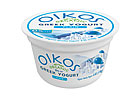
Sidebar: Going Greek
Stonyfield Farm, the world’s leading organic yogurt-maker, has partnered with Euphrates, Inc., makers of authentic old-world foods, to create a new organic, authentically strained Greek-style yogurt, under a new brand, Oikos Organic. Stonyfield says the debut was in response to a growing number of consumers with a passion for Greek yogurt. Creamy, healthful Greek-style yogurts are the fastest growing segment in the Natural Food channel, and the top selling yogurt variety overall in the New York metro market. Oikos is the only nationally distributed organic Greek style yogurt on the market to date. Oikos Organic Greek style yogurt will be widely available in natural and select grocery channels, to meet consumer demand.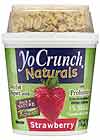
Sidebar: Crunchy Yogurt
YoCrunch, the crunchy yogurt mix-in pioneer, is releasing a new all-natural, smooth, lowfat yogurt topped with all-natural toppings such as Back to Nature Granola, Grape-Nuts Cereal and SunSpire baking chips. The new Naturals line comes available in Vanilla, Strawberry, Blueberry, Mixed Berry and Strawberry Banana flavors, with different topping combinations. It is also preservative-free, made from milk produced without rBST, sweetened with natural sugar. It also offers billions of beneficial probiotics per serving. The YoCrunch brand is now marketed in concert with Breyers Yogurts by Healthy Food Holdings, Boulder, Colo.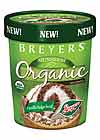
Sidebar: Big Ice Cream
Noting that sales of organic foods have nearly tripled since 1997 and that organic ice cream grew 55% during the same period, Good-Humor Breyers Ice Cream, a division of Unilever North America, decided late last year that it was time to launch Breyers All Natural Organic Ice Cream. Four SKUs were rolled out simultaneously: Vanilla Bean, Chocolate, Coffee and Vanilla Fudge Swirl. The line not only fits neatly with Breyers’ strategy of offering a wide variety of options for ice cream lovers, it also represents a milestone for organic dairy in that it is the first organic ice cream offered under a major national brand. The company says sales have been solid and it will continue to offer the organic line for as long as customer demand continues.